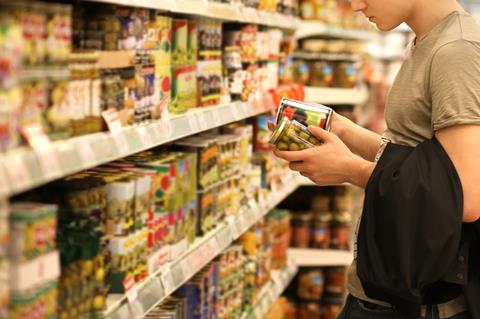
It might sound counterintuitive, but regulatory constraints can often unlock creative freedom and exploration when it comes to strategic brand design.
It’s an important thing to keep in mind given the amount of incoming regulations. Mandatory health warnings are set to come in for alcohol brands in Ireland in May 2026 – a move other home nations will surely follow. And last October saw the introduction of a fresh set of restrictions on foods that are high in fat, salt and sugar (HFSS), banning them from high-footfall areas. In October 2025, promotions such as ‘buy one get one free’ and ‘50% extra’ are also set to be phased out.
At first glance, it might all seem a bit gloomy and restricting for brands. But for strategic brand designers, shifting parameters present exciting new challenges and opportunities to move away from accepted tropes and think outside the box.
Navigating new territory
Measures like these can come across as top-down, as though the government is stepping in to mitigate damage to the population and control food, beverage and retail companies’ behaviour. The other side of the story is that ordinary people are driving the changes, while the powers that be simply reflect societal shifts in thinking.
For brand owners and their design partners, it’s about navigating new terrain, and understanding, recognising and balancing all sides of the issue. We have to work with our partners to take on board the practical considerations and opportunities to rethink relevance and engagement. Without that perspective, new regulatory mandates can feel like a one-way street.
Brand owners often feel a sense of loss and deep concern when new regulations come in. Their intellectual property has been compromised and they face a host of new challenges: additional complexities in touchpoints, channels, scalability and brand guardrails. Consumers may reconsider their choices and reassess a brand’s values unless reasons to believe are restored or new ones created. And traders and retailers will be looking to brands to find out how they are future-proofing.
How does all this affect the food and beverage manufacturer and their brand agency partner? In simple terms, when you limit a brand’s ability to communicate, everything that remains must work harder to drive trial, sustain loyalty and create advocacy. Facets of a brand or category experience that may have been neglected in the past have an opportunity to come into sharper focus when the ability to express and differentiate is compromised elsewhere.
Proactive responses
We’re seeing myriad strategies come to the fore. Take Unilever: it promised to stop advertising products to under-16s altogether. A self-imposed move that positions it as a champion of responsible consumption and ally to parents.
Other brands have redeveloped their ranges to lower fat, salt and sugar content. Kettle Chips Bread Bites carry less fat, Mr Kipling’s Deliciously range contains 30% less sugar than traditional lines, and Kellogg’s has cut sugar and salt across several of its products, for example.
As well as these moves, in order to meet policy requirements and continue to appeal to target consumers, there are other areas for food and beverage manufacturers and their brand agency partners to consider.
Contextual association
Think about what’s memorable about a brand. Formats, haptics, sound and aroma are all powerful sensory signals that make a lasting impression.
In a restricted market, you need to turn them up. It’s an opportunity to elevate a brand’s most iconic assets, creating disruptive ways to generate recall and association. Take the use of the iconic Coca-Cola ribbon: on its own, it’s enough for everyone to recognise the brand – proving simplicity doesn’t mean sacrificing high brand salience.
An identifiable graphic form, with no text to scale up or down, also makes life a lot easier when you think about zooming in and out of thumbnails on mobiles. And it shows product confidence.
Building connections
Amazon founder and CEO Jeff Bezos famously said: “Your brand is what other people say about you when you’re not in the room.”
What are the truths, barriers, urban legends? How does your brand make people feel? In restricted markets, there’s an opportunity to focus on the more unconventional, left-field details of your brand to drive the journey from trial to loyalty to advocacy. So why not channel your eccentricities?
By aligning with relevant events, activities or online platforms, brands can initiate conversations, encourage user-generated content and foster brand advocacy. Route to market, placement, promotion, rewards and loyalty programmes all offer opportunities for disruption – and need to be exploited. A brand’s agency partner can curate that rollout so it’s consistent and builds meaningful traction.
Balancing agility and consistency
It’s important to consider markets and geography, too. Legislative environments vary wildly around the world, which means the scalability and adaptability of brand platforms is complex. Having a well-thought-out brand localisation strategy ensures every aspect of a company’s branding is in the good graces of that global market.
All of these considerations help to connect every brand encounter the consumer has, building up a stronger set of mental associations. The more coherent these are, the more easily the brand comes to mind at key moments to influence purchase decisions.
Of course, when new rules come into practice there’s bound to be concern. But with strategic creative thinking, there’s no reason brands shouldn’t thrive in regulated sectors. Far from being a downer, these can be some of the most exciting times for brands.



















No comments yet